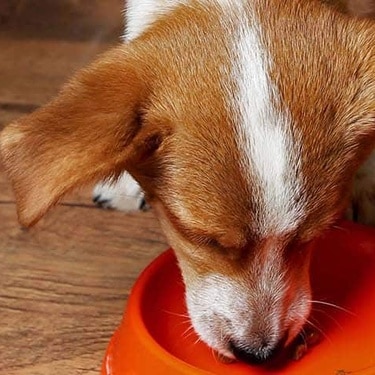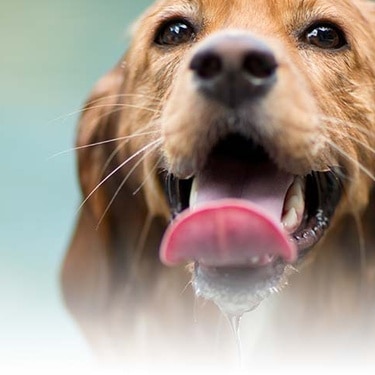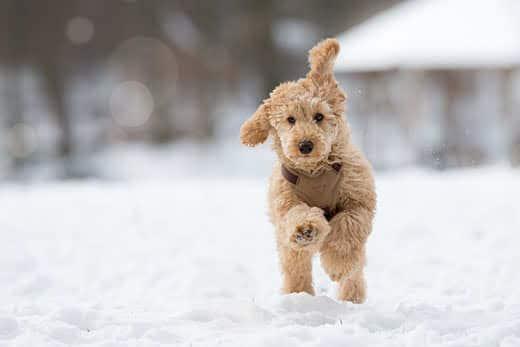
-
Find the right food for your petTake this quiz to see which food may be the best for your furry friend.Find the right food for your petTake this quiz to see which food may be the best for your furry friend.Health CategoryFeatured products
 Adult 7+ Healthy Cuisine Roasted Chicken, Carrots & Spinach Stew Dog Food
Adult 7+ Healthy Cuisine Roasted Chicken, Carrots & Spinach Stew Dog FoodDelicious roasted chicken paired with tender vegetables in a succulent stew
Shop Now Adult Salmon & Brown Rice Recipe Dog Food
Adult Salmon & Brown Rice Recipe Dog FoodSupports lean muscle and beautiful coat for adult dogs
Shop Now Perfect Weight & Joint Support Large Breed Chicken & Brown Rice Recipe Dog Food
Perfect Weight & Joint Support Large Breed Chicken & Brown Rice Recipe Dog FoodThis weight management and mobility support dog food was created with Hill’s unique understanding of the biology of overweight dogs
Shop NowFeatured products Adult Perfect Weight with Chicken Cat Food
Adult Perfect Weight with Chicken Cat FoodBreakthrough nutrition for your cat’s healthy weight maintenance and long-lasting weight support
Shop Now Adult Urinary Hairball Control Tender Chicken Dinner Cat Food
Adult Urinary Hairball Control Tender Chicken Dinner Cat FoodPrecisely balanced nutrition to support urinary health from kidney to bladder. With natural fibre technology to help reduce hairballs.
Shop Now Adult Salmon & Brown Rice Recipe Cat Food
Adult Salmon & Brown Rice Recipe Cat FoodSupports lean muscle and beautiful fur for adult cats
Shop Now -
DogCat
- Cat Tips & Articles
-
Health Category
- Weight
- Skin & Food Sensitivities
- Urinary
- Digestive
- Kidney
- Dental
- Serious Illness
-
Life Stage
- Kitten Nutrition
- Adult Nutrition
Featured articles Pet Food Storage Tips
Pet Food Storage TipsWhere you store your cat and dog food can make a big difference in the quality and freshness once it is opened. Here are some common questions and recommendations for optimal storage for all of Hill’s dry and canned cat and dog food.
Read More The Right Diet For Your Pet
The Right Diet For Your PetLearn what to look for in healthy pet food & nutrition, including ingredients, quality of the manufacturer, your pet's age, and any special needs they have.
Read More Water
WaterWater is the most important nutrient of all and essential for life. Animals can lose almost all their fat and half their protein and still survive, but if they lose 15% of their water, it will mean death.
Read More -


As winter approaches, it's important to keep your dog warm and dry. Cold, damp conditions can be hazardous for unprotected paws, ears and tails. In fact, frostbite on dogs' paws is one of the more common winter injuries seen by veterinarians.
There are no hard rules for how cold it has to be for a dog to be at risk for frostbite or how long they should be exposed to winter conditions. However, water, brutal winds and touching metal can make dog frostbite more likely. Read on to learn more about how frostbite affects dogs.
Clinical Signs of Dog Frostbite
Commonly affected areas include body parts that have thinner coats and less insulation, according to the Merck Veterinary Manual. Body regions with increased exposure to wind and moisture, including the tips of the ears, noses, paws and tails, are also at increased risk for developing frostbite if not adequately protected from winter's bite.
The physical appearance of dog frostbite may vary based upon severity of the injury and how recent the exposure was.
 Shallow frostbite results in skin paler in color than the surrounding area. The skin may peel and lose hair, develop blisters or turn red. The affected area may also be numb or painful. Deeper freezing causes the affected skin to harden. This area may be cool to the touch, even when the dog is no longer exposed to cold temperatures. Darkened skin is typically the most severely affected. This skin may weep, bleed or secrete yellow-green material. With time, severe injuries may cause tissue death and sloughing
Shallow frostbite results in skin paler in color than the surrounding area. The skin may peel and lose hair, develop blisters or turn red. The affected area may also be numb or painful. Deeper freezing causes the affected skin to harden. This area may be cool to the touch, even when the dog is no longer exposed to cold temperatures. Darkened skin is typically the most severely affected. This skin may weep, bleed or secrete yellow-green material. With time, severe injuries may cause tissue death and sloughing
Any dog exposed to freezing temperatures can develop frostbite, though those that are not acclimated to winter weather are at increased risk, along with those with thinner hair coats. Younger and older dogs are both more likely to develop the condition, as they are more prone to unstable body temperatures. Dogs with compromised circulation, such as those with diabetes mellitus, are more likely to suffer from dog frostbite.


Tasty Tips
How Vets Diagnose and Treat Dog Frostbite
Frostbite on dogs' paws has a classic appearance and is typically easy to diagnose based upon known exposure to winter temperatures.
If caught promptly, treatment consists of gentle warming and supportive care. If your pet is suffering from cold body temperatures overall then this will also be part of the treatment plan. It should be noted that frostbite should not be treated at home. If you notice signs of frostbite on your pup, please leave it to the experts, as you can do more harm than good if you warm the skin too rapidly.
For severe frostbite, surgical removal of affected regions may be necessary, unfortunately. Your vet will likely wait to operate on damaged tissues until the full extent of the tissue is understood. Because damage to the tissues doesn't show up immediately, this does require time and a few days of patience. Rest assured frostbite does not spread to other tissues once the damage occurs; it just takes a small amount of time for all the damage that has occurred to be clearly visible, according to VCA .
Avoiding Frostbite on Dogs' Paws
 During winter weather, paw pads can dry and crack. Ask your vet for a good pad moisturizer and avoid human hand moisturizer, as this can soften the pads and lead to injury. Many of the chemicals that are used to melt ice and maintain safe roads and walkways are quite caustic for puppy paws. To avoid sores and blistering on your pup's paws, you can slather them with a layer of petroleum jelly prior to outdoor walks. This can prove messy, but only a small amount is needed to do the trick. Wintertime booties are another way to protect your dog's paws from the harsh winter elements. Surprisingly, most dogs adapt very quickly to booties, though initially you may want to prepare for some belly laughs.
During winter weather, paw pads can dry and crack. Ask your vet for a good pad moisturizer and avoid human hand moisturizer, as this can soften the pads and lead to injury. Many of the chemicals that are used to melt ice and maintain safe roads and walkways are quite caustic for puppy paws. To avoid sores and blistering on your pup's paws, you can slather them with a layer of petroleum jelly prior to outdoor walks. This can prove messy, but only a small amount is needed to do the trick. Wintertime booties are another way to protect your dog's paws from the harsh winter elements. Surprisingly, most dogs adapt very quickly to booties, though initially you may want to prepare for some belly laughs.
When the temps drop and your dog's paws get wet, foot fur is an easy place for ice to form and cling to. To prevent these unwanted "footsicles," comb the foot hair out, especially from between the toes, and trim the fur evenly to the level of the paw pads. If you prefer, a groomer can also perform this quick service and get a closer cut than you will likely be able to achieve at home.
Routine nail trims are a wise habit to get into, starting from the earliest of puppy days. When they aren't kept nice and short, the nail is at risk for getting caught on something or splitting. In the wintertime, cold temperatures make nails more brittle and prime for damage. Ask your vet's staff for advice on how to properly trim your pup's nails if you have not established this routine.
When the temperature is brutal, explore other winter exercise activities and winter safety tips here. With a small amount of preparation, your pup can join in the winter fun safely and frostbite-free.


Dr. Laci Schaible is a small animal veterinarian, veterinary journalist, and a thought leader in the industry. She received her Doctor of Veterinary Medicine from Texas A&M University and her Masters in Legal Studies from Wake Forest University.
Related products

Gentle on stomachs while nourishing skin & supporting development in growing puppies

This weight management and mobility support dog food was created with Hill’s unique understanding of the biology of overweight dogs

Delicious roasted chicken paired with tender vegetables in a succulent stew

Supports lean muscle and beautiful coat for adult dogs
Related articles

Selecting the right food for your puppy is a key to quality nutrition and a long, healthy life., Learn more about how to select the right puppy food.

Learn what you can feed your pregnant or nursing dog to keep her and her new pups healthy.

A dog with a sensitive stomach has special needs. Learn more about sensitive stomach symptoms in your dog, what you can do to help sooth your pet’s insides and get recommendations on sensitive stomach dog food.

Though it may seem like your four-legged friend loves nothing more than to nap on the couch, dogs need regular exercise to stay healthy just like people do.

Put your dog on a diet without them knowing
Our low calorie formula helps you control your dog's weight. It's packed with high-quality protein for building lean muscles, and made with purposeful ingredients for a flavorful, nutritious meal. Clinically proven antioxidants, Vitamin C+E, help promote a healthy immune system.
Put your dog on a diet without them knowing
Our low calorie formula helps you control your dog's weight. It's packed with high-quality protein for building lean muscles, and made with purposeful ingredients for a flavorful, nutritious meal. Clinically proven antioxidants, Vitamin C+E, help promote a healthy immune system.

